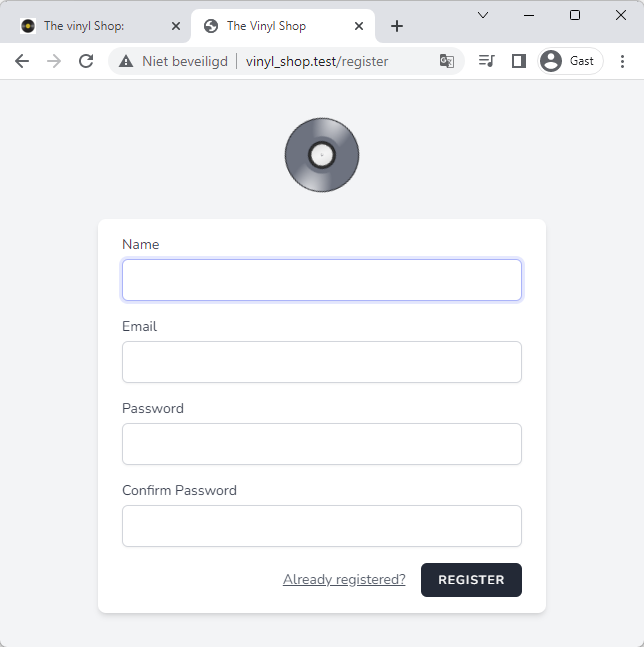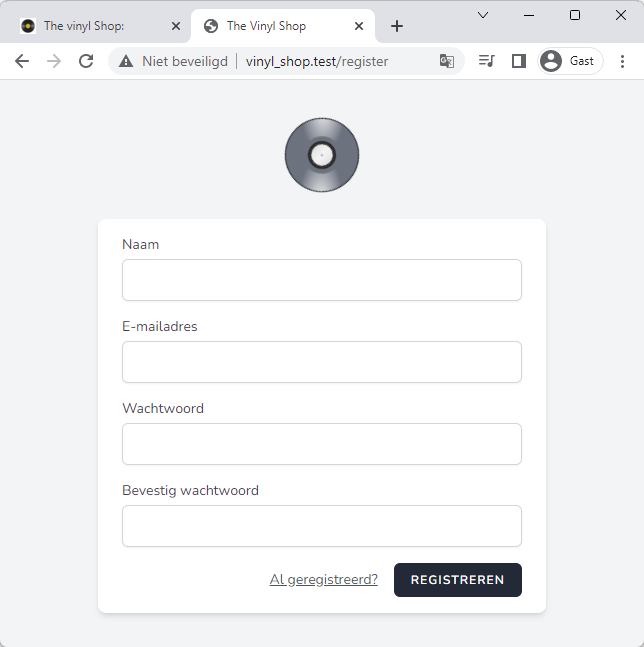# Localization
- Laravel's localization features (opens new window) provide a convenient way to retrieve strings in various languages, allowing you to easily support multiple languages within your application
- Language strings are stored in files within the lang directory in the root of your application. Within this directory there should be a subdirectory for each language supported by the application.
- Here you see the default (English) views for the error 404-page page and the registration page:
404-page
Register page
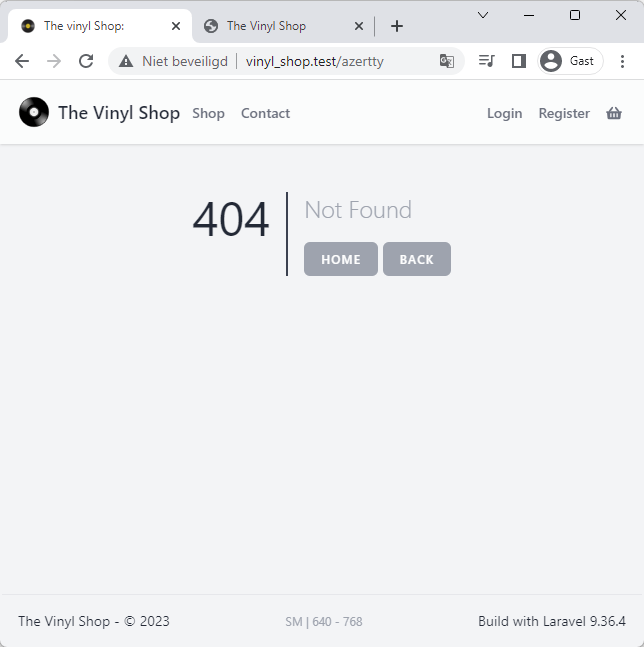
- All these pages can easily be translated to another language, for example Dutch
# Single language site (other than English)
WARNING
- It's best to install the translation files immediately after creating a new Laravel project
- If you already have a project, you can update your project with the command
composer updateand then install the translation files
- There is a really nice package called Laravel-lang (opens new window) that provides a lot of translation language files for Laravel, Jetstream and all the other packages maintained by the Laravel team
- Install this package, together with the Laravel Lang Publisher Package (opens new window), with the following command:
composer require laravel-lang/lang laravel-lang/publisher laravel-lang/attributes --devCopied!
1
- Next, publish the language file(s) you want to use with the following command:
(choose nl for Dutch, fr for French, etc.
php artisan lang:add nlCopied!
1
- Most of the Dutch language files are now installed in the lang/nl directory and there is one extra lang/nl.json file
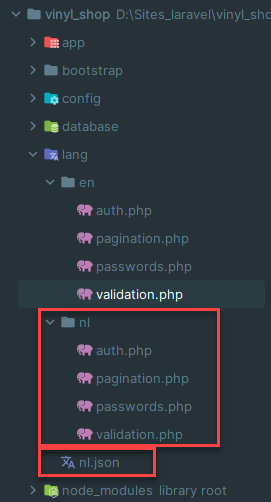
# Set the default language to Dutch
- Open the config/app.php file, search for the locale key and set the value to nl
... 'locale' => 'nl', ... 'fallback_locale' => 'en', ...Copied!
1
2
3
4
5
2
3
4
5
- Reload the 404-page and the registration page, and you will see that the pages are now in Dutch
404-page
Register page
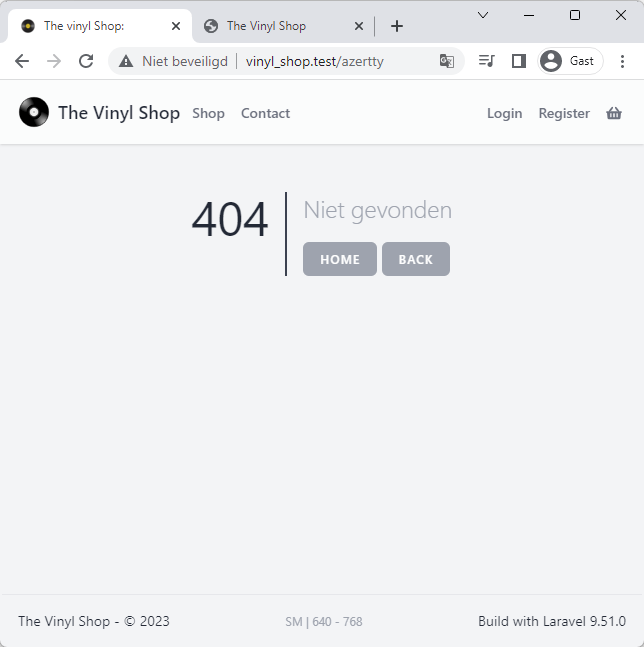
# How does it work?
- Translatable items are always surrounded with
__()and contain:- The default string value, in case the translation string is not found in the language.json file
- The name of the language file (before the dot) followed by the key inside the language file (after the dot)
# Translating a strings
- Open the resources/views/errors/404.blade.php file, and you will see that the page some special syntax for the language strings:
@section('message', __('Not Found')) - Translation strings are surrounded with
__()and contain the default string value: 'Not Found' - Now open the file lang/nl.json, and you will see that the translation string is already there:
{ ... "Not Found": "Niet gevonden", ... }Copied!
1
2
3
4
5
2
3
4
5
- Because our default language is set to Dutch and the translation string is already there, we see the Dutch translation Niet gevonden on the page
- Temperately remove the translation string from the lang/nl.json file and reload the page (Not Found is shown on the page)
# Translation arrays
- Static text translations are (mostly) stored in the lang/nl.json file, but other translations (validation messages, auth, ...) are stored in the lang/nl/xxxxx.php file
- Let's go to the shop page, and make the page very small (so you can see the 'Previous' and 'Next' buttons)
English version
Dutch version
- set the default language to English (
'locale' => 'en'))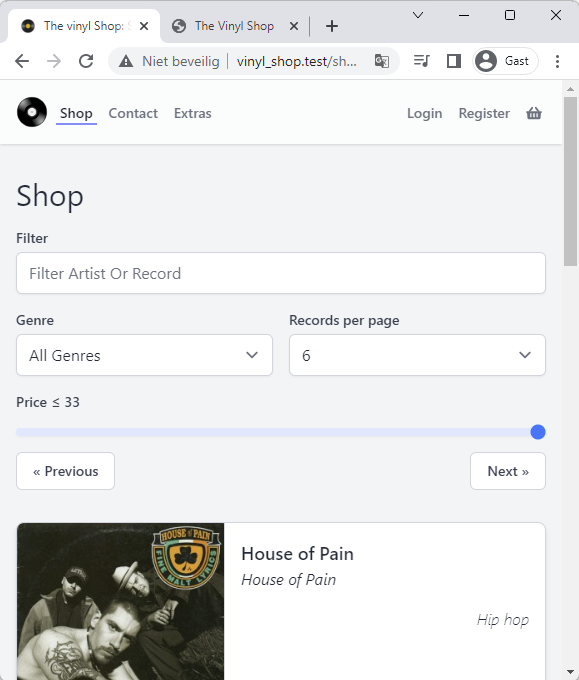
- Now open the Livewire component resources/views/vendor/livewire/tailwind.blade.php file that we published and modified earlier in this course
div class="flex justify-between flex-1 sm:hidden"> <span> @if ($paginator->onFirstPage()) <span class="relative inline-flex items-center px-4 py-2 text-sm font-medium text-gray-500 bg-white border border-gray-300 cursor-default leading-5 rounded-md select-none"> {!! __('pagination.previous') !!} </span> @else ... @endif </span> <span> @if ($paginator->hasMorePages()) <button wire:click="nextPage('{{ $paginator->getPageName() }}')" wire:loading.attr="disabled" dusk="nextPage{{ $paginator->getPageName() == 'page' ? '' : '.' . $paginator->getPageName() }}.before" class="relative inline-flex items-center px-4 py-2 ml-3 text-sm font-medium text-gray-700 bg-white border border-gray-300 leading-5 rounded-md hover:text-gray-500 focus:outline-none focus:shadow-outline-blue focus:border-blue-300 active:bg-gray-100 active:text-gray-700 transition ease-in-out duration-150"> {!! __('pagination.next') !!} </button> @else ... @endif </span> </div>Copied!
1
2
3
4
5
6
7
8
9
10
11
12
13
14
15
16
17
18
19
20
21
2
3
4
5
6
7
8
9
10
11
12
13
14
15
16
17
18
19
20
21
- Look at the translation string
__('pagination.previous')(line 5) and__('pagination.next')(line 15)pagination(before the dot) refers to the name of the language filepreviousandnext(after the dot) refers to the key inside that language file
lang/en/pagination.php
lang/nl/pagination.php
<?php return [ 'previous' => '« Previous', 'next' => 'Next »', ];Copied!
1
2
3
4
5
6
2
3
4
5
6
